The figure shows two blocks of mass m1andm2 placed one above the other. These is no friction between the lower block and ground. The lower block is being pushed by a constant horizontal force F. There is sufficient friction between the blocks so that they do not slip over each other. Draw the free body diagram of the upper block in the frame of groung and in the frame of lower block. Find the work done by various forces on the upper block in the two frames as the arrangement moves through 'S'
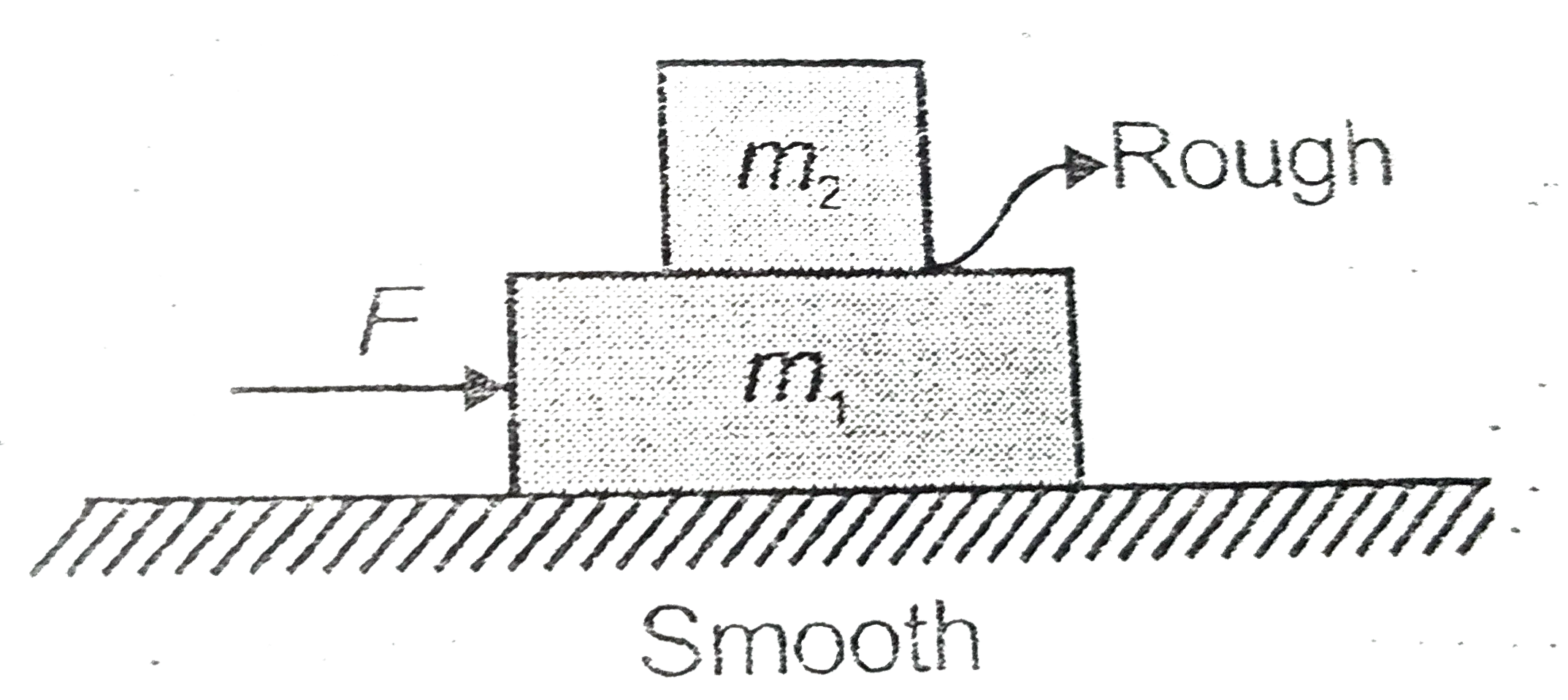
As the two blocks move together, their common acceleration is given by F=(m1+m2)aora=Fm1+m2
(i) FBD of m2 with respect to ground.
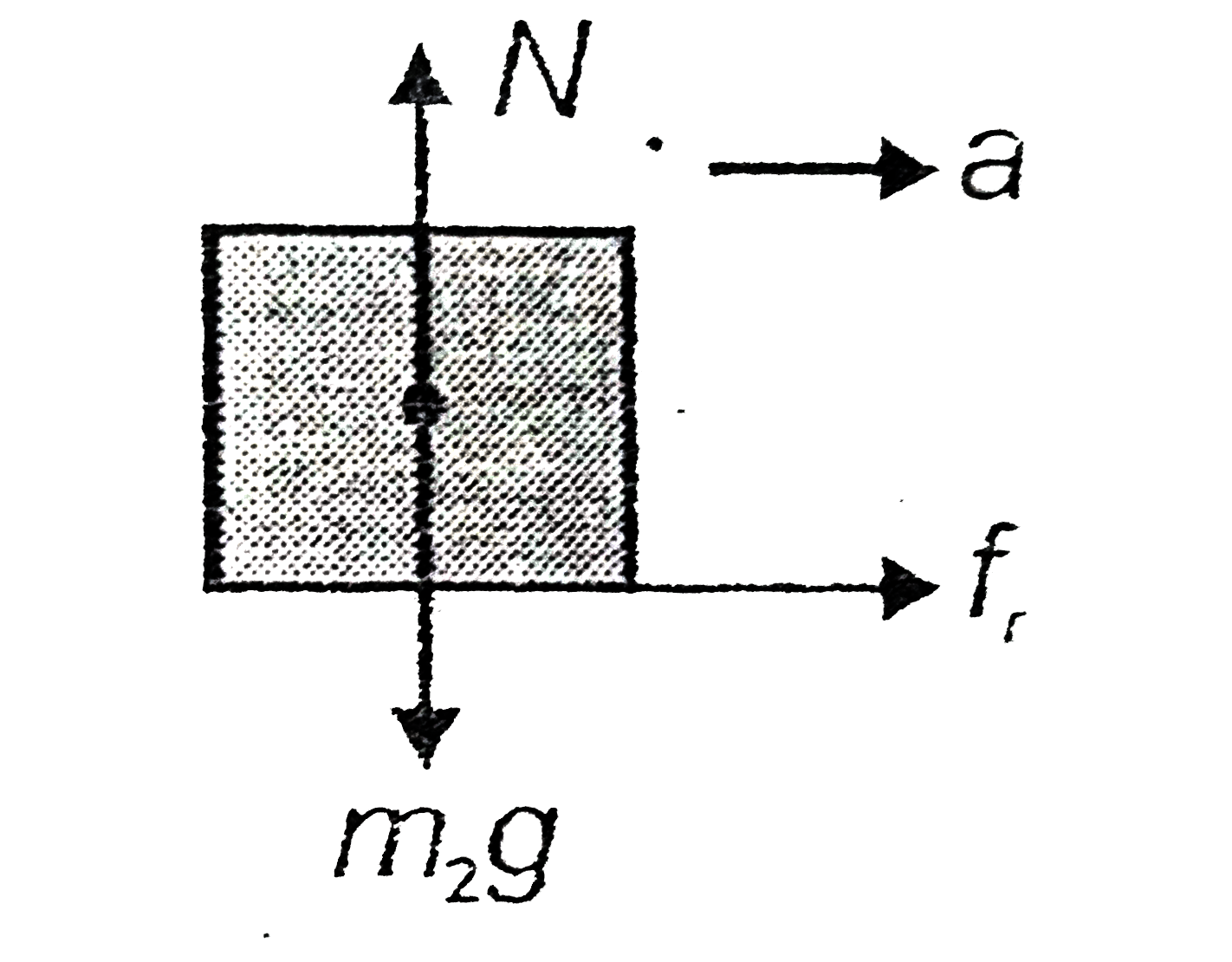
N=m2g (equilibrium along vertical)
fr=m2a (by newton's 2nd law).
WN=0,Nm2g)=0.
Wf=m2a×S×cos0∘
=m2FS(m1+m2)
(ii) FBD of m2 in the frame of m1
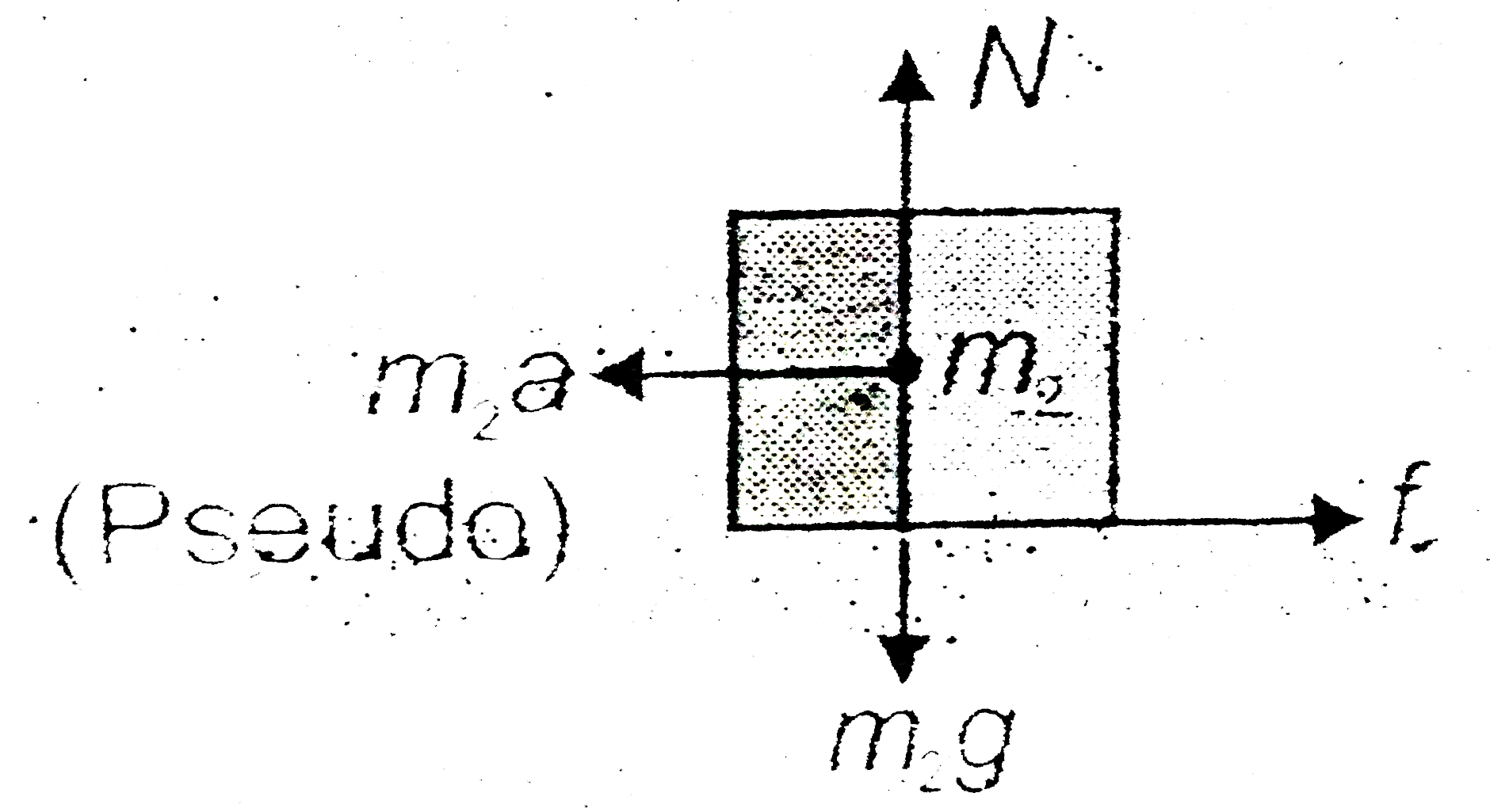
In the frame of m1 th mas m2 does not move. Therefore, work done by all the forces is zero.
Topper's Solved these Questions
- WORK, ENERGY AND POWERBOOK - AAKASH INSTITUTE ENGLISHCHAPTER - WORK, ENERGY AND POWEREXERCISE - IILUSTRATION
2 Videos
- WORK, ENERGY AND POWERBOOK - AAKASH INSTITUTE ENGLISHCHAPTER - WORK, ENERGY AND POWEREXERCISE - TRY YOURSELF
95 Videos
- WAVESBOOK - AAKASH INSTITUTE ENGLISHCHAPTER - WAVESEXERCISE - ASSIGNMENT ( SECTION-D ( Assertion - Reason Type Questions ))
12 Videos
Similar Questions
A block of mass m is moving on a rough horizontal surface. μ is the coefficient of kinetic friction between the block and the surface. What is the net force exerted by the surface on the block?
View SolutionThree blocks A,B and C are placed one over the other as shown in figure. Draw free body diagram of all the three blocks.
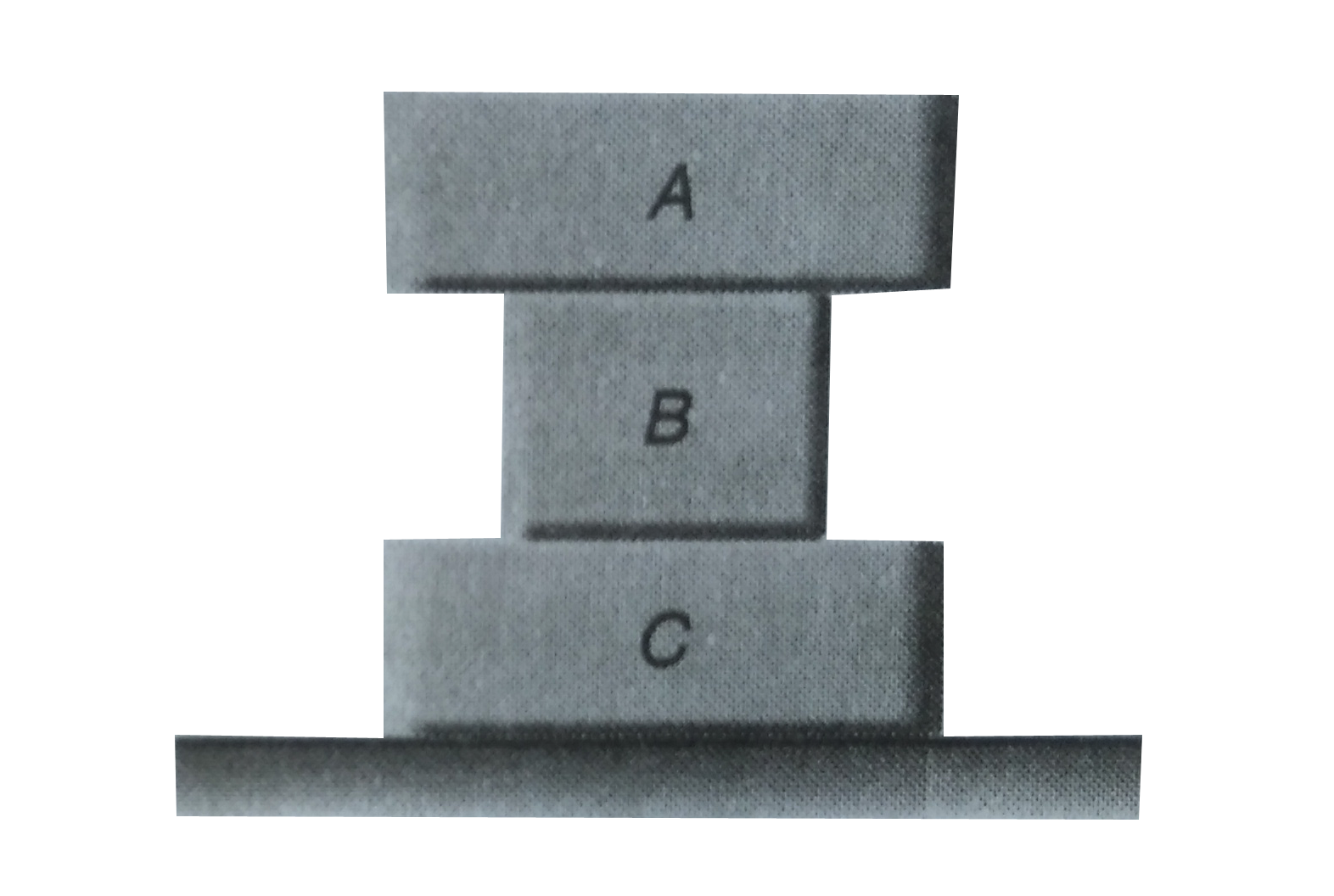
View SolutionThree blocked A,B and C are placed one over the other as shown in figure. Draw free body diagram of all the three blocks.

View SolutionFor the two blocks shown in the adjacent figure, an external force of 18N is applied on the lower block. Find the acceleratiion of the upper block.
View SolutionOn a smooth table two blocks of masses 2.5kg and 1.5kg are placed one over the other as shown in figure. If the coefficient of static friction between two blocks is 0.2, the maximum horizontal force to be applied on the lower block so that the two blocks move together is (g = ms−2)

View SolutionA block of mass m is placed at rest on an inclination θ to the horizontal. If the coefficient of friction between the block and the plane is μ, then the total force the inclined plane exerts on the block is
View SolutionA block of mass m is attached with two strings as shown in figure .Draw the free body diagram of the block.
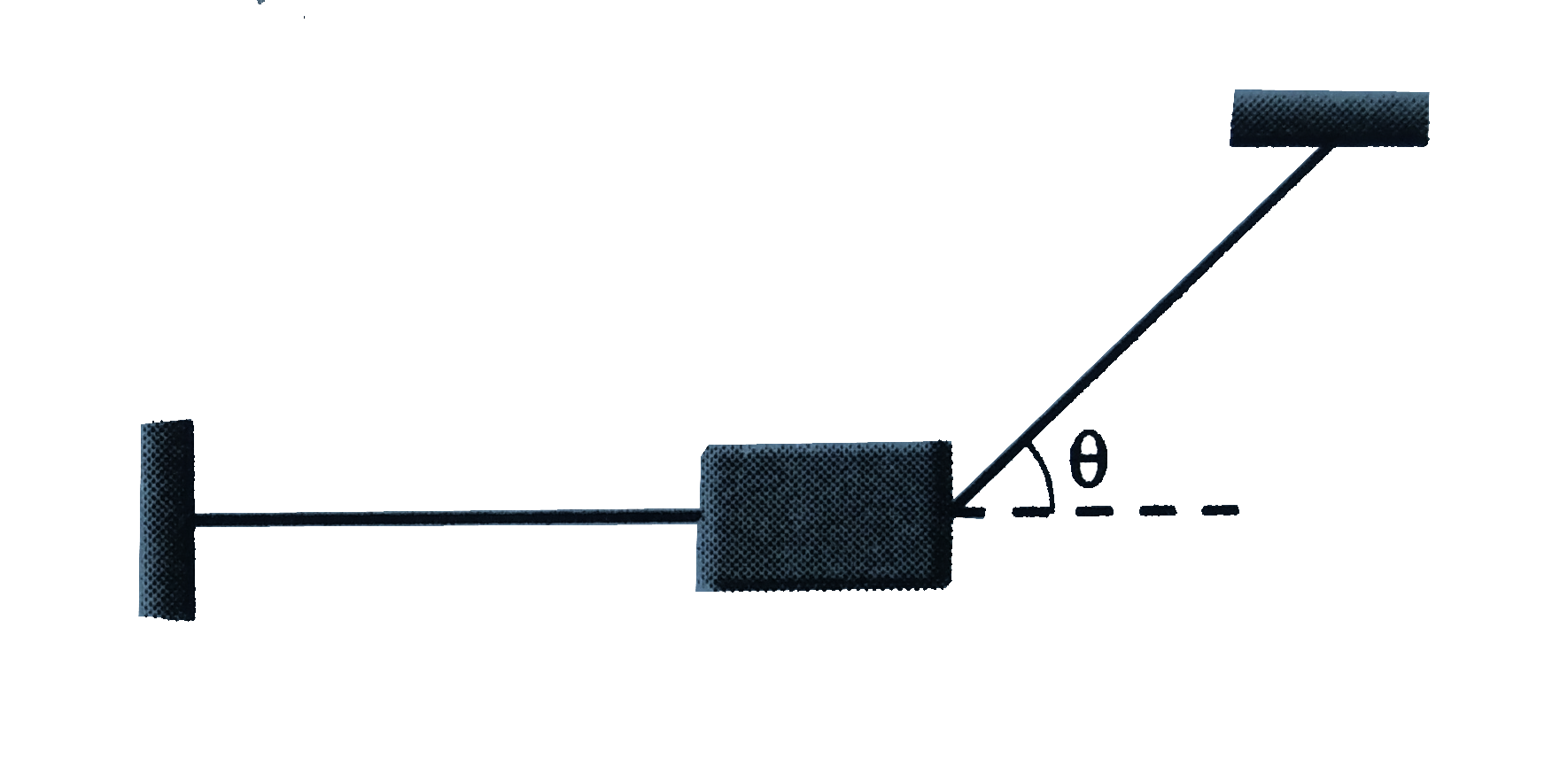
View SolutionA block A of mass M rests on a wedge B of mass 2M and inclination θ. There is sufficient friction between A and B so that A does not slip on B. If there is no friction between B and ground, the compression in spring is
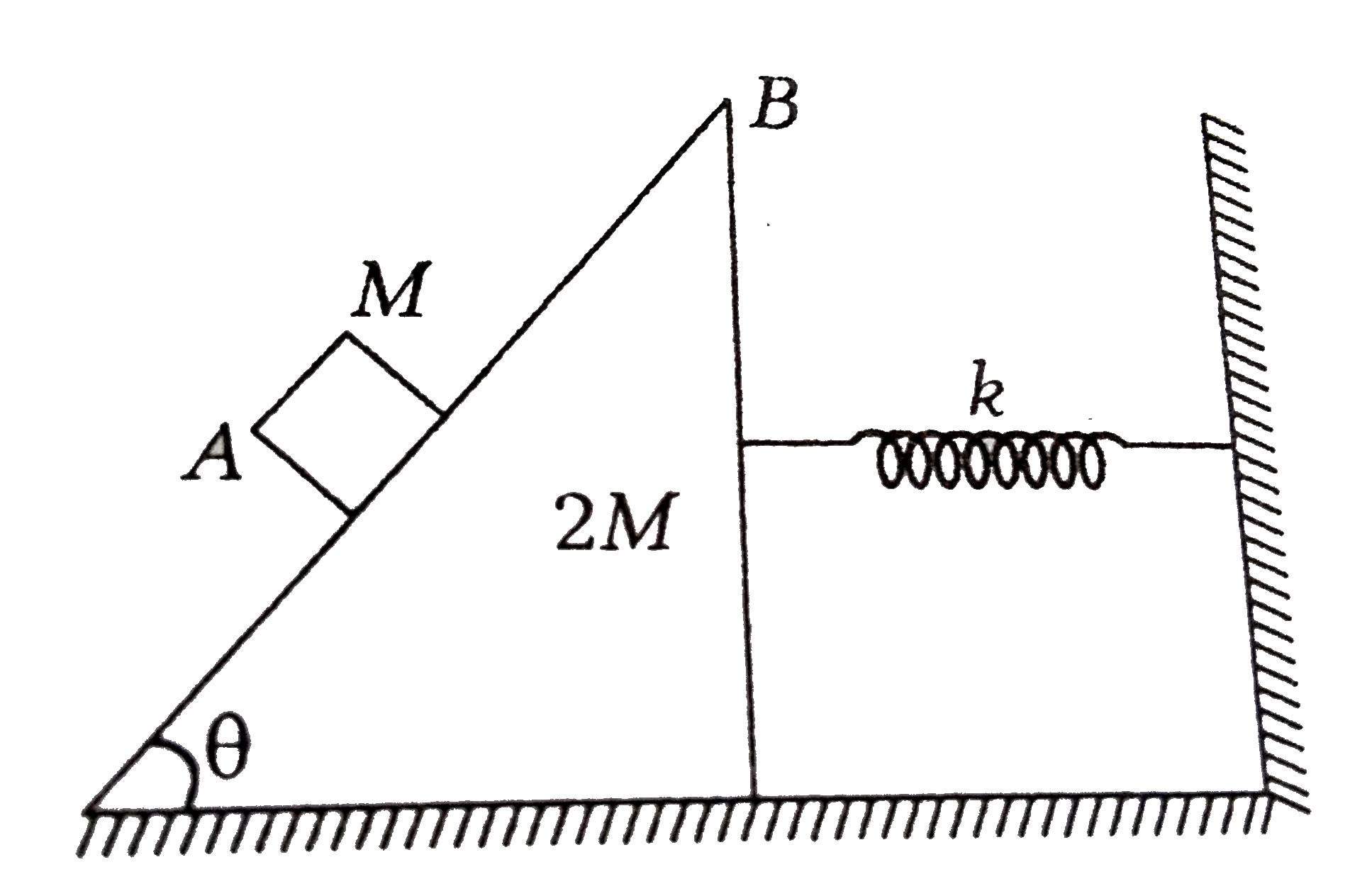
View SolutionA block A of mass M rests on a wedge B of mass 2M and inclination θ. There is sufficient friction between A and B so that A does not slip on B. If there is no friction between B and ground, the compression in spring is

View SolutionIn the following diagram a massless pulley is pulled by a constant force of magnitude P. There is no friction between the block and the floor. The acceleration produced in the block of mass m is
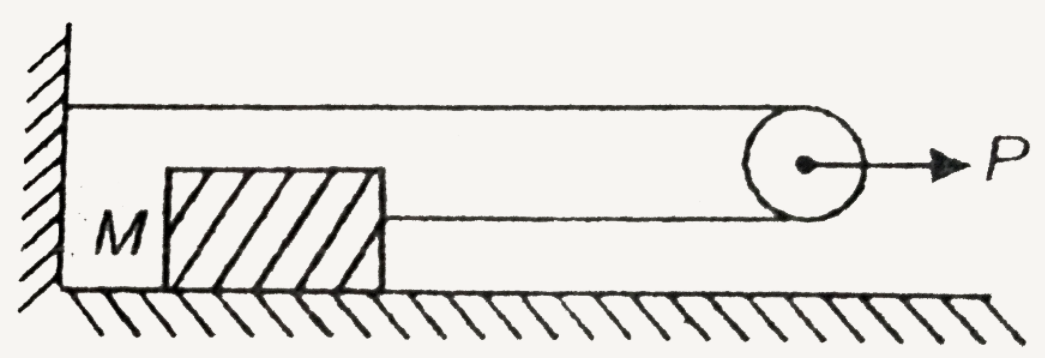
View Solution
